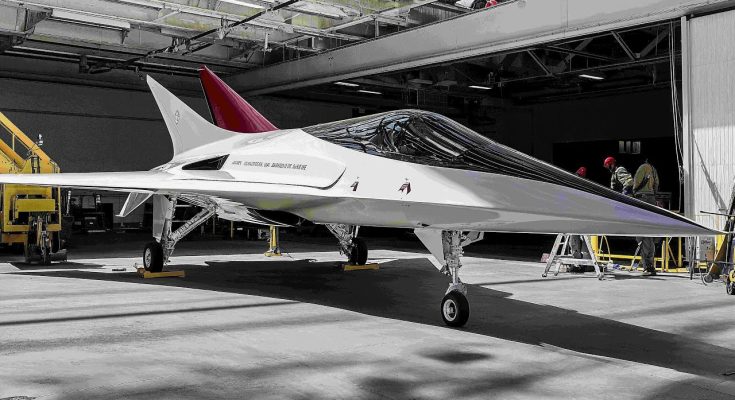The U.S. has recently made significant strides in the realm of supersonic aviation with the successful test flights of new cutting-edge aircraft. The two most notable developments are the Boom Supersonic XB-1 demonstrator, which recently broke the sound barrier, and NASA’s X-59 QueSST, designed to revolutionize supersonic travel with minimal noise.
Boom Supersonic XB-1: “Son of Concorde”
On January 28, 2025, Boom Supersonic’s XB-1 jet made history by surpassing the sound barrier. This test flight, conducted in Mojave, California, marked the first successful supersonic flight by an independently developed aircraft since the Concorde. The XB-1, which is a precursor to Boom’s commercial supersonic airliner, the Overture, achieved a speed of Mach 1.05. The Overture is designed to carry up to 80 passengers at Mach 1.7, potentially reducing flight times across the Atlantic to just 3.5 hours.
Boom Supersonic has already garnered support from major airlines like American Airlines and United, with expectations that the Overture will begin commercial service by 2029. The success of the XB-1 test flight is a significant step toward this ambitious goal, showcasing the company’s ability to develop the next generation of supersonic airliners.
NASA’s X-59 QueSST: The Future of Quiet Supersonic Travel
In addition to the XB-1, NASA’s X-59 QueSST (Quiet SuperSonic Technology) is another major leap forward in supersonic flight. This aircraft is designed to reduce the disruptive sonic boom that traditionally accompanies supersonic flight. Instead of a loud boom, the X-59 aims to produce a much quieter “sonic thump,” addressing one of the key challenges that have restricted supersonic travel over land.
The X-59, built by Lockheed Martin in partnership with NASA, is capable of reaching speeds of 924 mph at 55,000 feet, while generating noise levels comparable to a toilet flushing. This aircraft is undergoing extensive testing, with its first flight scheduled for later this year. The goal is for the X-59 to be used for research on the effects of sonic thumps on communities, potentially paving the way for commercial supersonic travel over land by the late 2020s.
Implications for the Future of Aviation
These advancements are exciting developments in the quest for faster air travel. The success of both the XB-1 and the X-59 demonstrates the significant progress being made in addressing key issues like speed, efficiency, and noise reduction. As the next generation of supersonic jets nears commercial readiness, the future of air travel could see much faster journeys across the globe, transforming how we think about flight.
For now, the U.S. continues to lead the way in supersonic jet technology, signaling a new era of aviation that might soon be commonplace in the skies.



